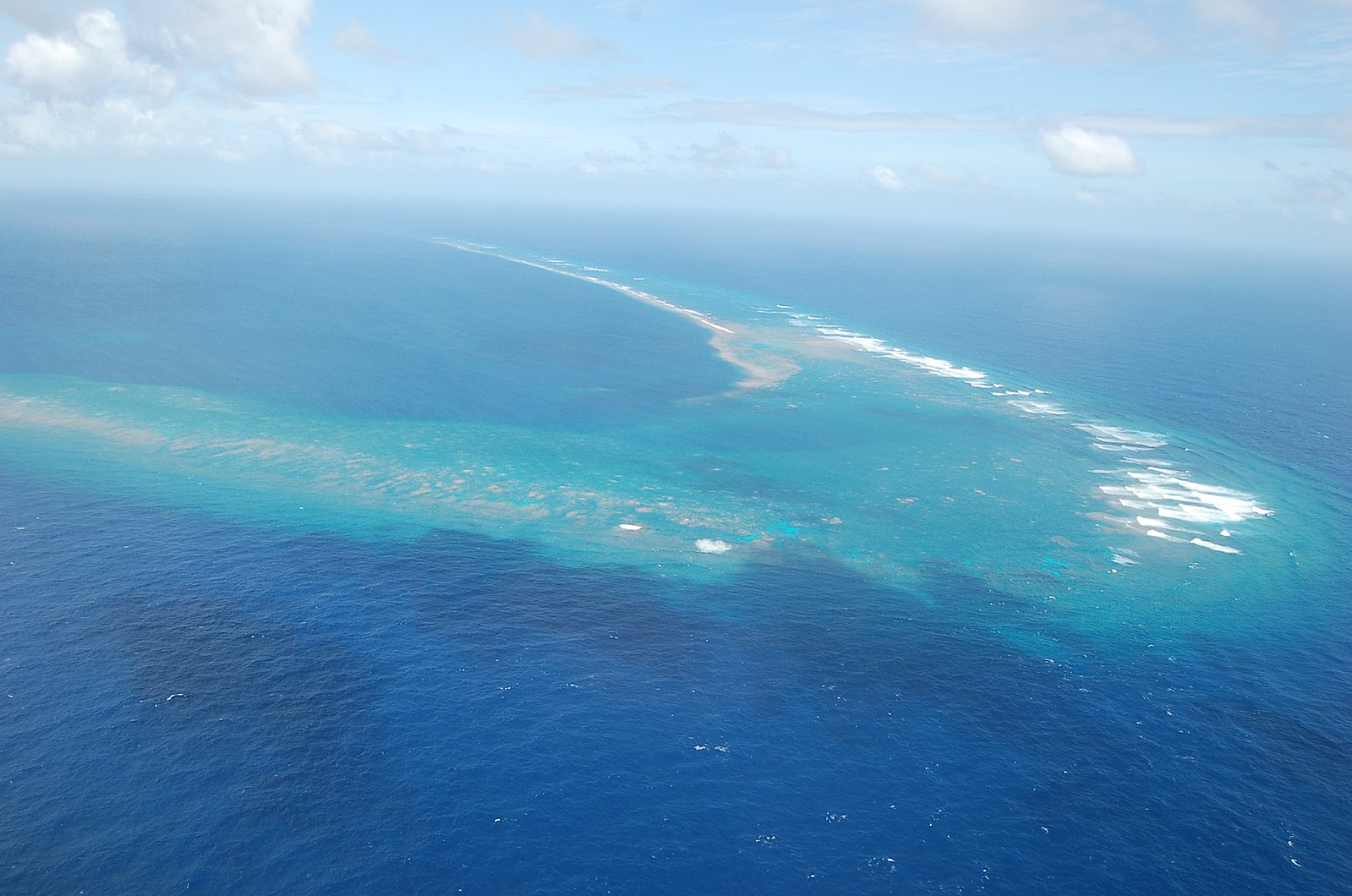King of the Reef: This Strip of 'Land' is Royally Isolated
Kingman Reef sits about halfway between Hawaii and American Samoa (Image: Wikimedia Commons)
If you were to ask a random person on the street where the Hawaiian Islands are, there's a pretty good chance most people would be able to give you a fairly accurate answer. Ask about American Samoa or French Polynesia, and you'll most likely get a mixed bag of people who vaguely know where either of those are and a good deal of others who will be left scratching their heads. If you really want to stump someone, however, ask them where Kingman Reef is. My guess is that 95 percent of people would have no idea what you're talking about.
If you're part of that 95 percent, there's really no shame in that — I mean, knowing or not knowing the geographic location of an uninhabited reef composed of coral rubble and giant clamshells in the middle of the Pacific Ocean is probably not going to impact your life in any significant way. But if you want to join the Five-Percent Club and be in the know just for the fun of it, I'd invite you to keep reading (pretend I'm speaking in hushed, conspiratorial tones, if you like).
As mentioned above, Kingman Reef is an uninhabited strip of "land" situated smack dab in the middle of the Earth's largest ocean. Officially part of the Northern Line Islands, the reef, which is largely or entirely submerged depending on the level of the tide, sits 36 nautical miles northwest of another of its Northern Line Island buddies, Palmyra Atoll. But because Palmyra is unoccupied — save for the couple dozen rotating scientists that are stationed there at any given time — and because you probably have no idea where that is either, let's just say for reference that Kingman Reef also sits about 930 nautical miles south of Honolulu, the Hawaiian capital.
Though discovered by Edmund Fanning, an American sailor, in the late 18th century, the triangular, 29-square-mile reef is named for Captain W.E. Kingman, who stumbled upon its coral-ly confines in November 1853. A couple years later, Mr. Kingman proceeded to describe the isolated stretch of mostly-submerged land in a Hawaiian publication called The Friend, a 175-year-old newspaper that is still published today six times a year by the Hawai’i Conference of the United Church of Christ.
A snapshot of Kingman Reef, in all of its coral and clamshell glory, from October 2003 (Image: Wikimedia Commons)
In the Sept. 29, 1855, issue of the paper, Kingman wrote a letter to the editor describing the reef that would come to be named after him, saying: "Two years since, when on passage from this port to New London, I discovered a small shoal or reef not laid down on my charts, and having had several inquiries made relative to it, I have thought best to ask you, to publish an account of it, and believe that by so doing you will contribute to the safety of ships cruising that vicinity."
He continued: "This shoal is composed of coral and sand, and when the breakers on the North East part bear East with a moderate wind, a few small spots of sand or coral, can be seen above water. The northern part runs E.N.E. & W.S.W., for about twelve miles, and shoal water; appeared to extend several miles to the southward. With moderate breeze there are no breakers except on the N. E. point of the reef, but heavy swell rolls for several miles to the westward."
Undoubtedly, Kingman Reef has been visited numerous times since its modern-day namesake discovered it more than 150 years ago. There was that time, of course, in 1922, when Lorrin A. Thurston stepped foot on shore and said, "This belongs to the United States, so everyone else can GTFO," (historical accounts may vary). And then there was that other time when Pan Am decided to use the reef as a stopover location for transpacific flights from the U.S. to New Zealand via Samoa — until one of their planes exploded after takeoff from Pago Pago on Jan. 11, 1938, and they said, "Nah fam, we ain't gonna do that anymore."
More recently, amateur radio operators have briefly set up shop on Kingman Reef from time to time, broadcasting from the isolated and remote location (a feat apparently known as a DX-pedition (we're both learning new things here)). Even more recently — like Jan. 18, 2001-recently — former Secretary of the Interior Bruce Babbitt created the Kingman Reef National Wildlife Refuge, which includes the reef's sometimes-exposed dead and dried coral skeletons and all waters out to 12 nautical miles.
Kingman Reef supports a vast variety of marine life, including approximately 38 genera and 130 species of stony corals (Image: Wikimedia Commons)
When a particular ecosystem supports more than three times the species diversity as compared with corals found in the main Hawaiian Islands, I'd say that's a pretty good reason to keep that sucker protected. So props to you, Mr. Babbitt, wherever you may be. Sadly, however, that national wildlife refuge designation and the subsequent protection it provides means you and I can't step foot on Kingman Reef. It is closed to the public, and, for the sake of preservation, we better hope it stays that way.
If you're really itching to visit a remote Pacific destination that's less Hawaii and more I'm-stranded-in-the-middle-of-a-vast-blue-desert, though, you could always hop a couple flights and hit up American Samoa, or just plain old Samoa. With either option, you'll be thousands of miles from the nearest continent (Australia, in this case), so you really can't lose.
I know what you're thinking: "Gosh, I'll have to trudge through a more populated place like New Zealand, Australia, Fiji, or Hawaii to get to either of the Samoas, and dealing with all of those people will practically be torture." It's okay, though. I have trust you will face those awfully daunting obstacles with poise and grace. And when you finally get to where you're going, whether that be Pago Pago or Tafuna or Apia, the traumatic ordeal will have been well worth it.
-LTH
*P.S. Samoa Scenic, a fully Samoan-owned destination management company, is a good place to start if you're seriously considering visiting either of the Samoas.



